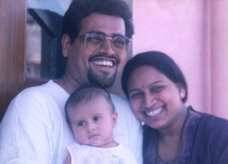“The single story creates stereotypes. And the problem with stereotypes is not that they are untrue, but that they are incomplete.” - Chimamanda Ngozi Adichie
In the early 80’s, a single story was spread about the Sikh community in India … that all of them were violent terrorists deserving to be shot down by the Army. This single story sought to condemn an entire community which actually carries many dimensions of humanism, humour, entrepreneurship and infectious enthusiasm. Today, though that vicious single story of the Sikhs is no longer a part of our consciousness… the actions and attitudes born of it have left behind a bloody trail of brutality and killing.
Single stories give rise to stereotypes and prejudices that lead us to opinions ranging from contempt to hatred, from false pride to a negative sense of history, from insensitivity to irrationality. Stories cannot be just painted in black and white with shades of grey. They must reflect the entire assortment of facts, contradictions and possibilities. The hue has to reflect the human diversity in its multiple dimensions and its many stories.
Nigerian writer, Chimamanda Ngozi Adichie, makes the pertinent point that the single, stereotyped story flattens the experience to a singular and dangerously-damaging dimension. She insists that multiple stories matter, “Stories have been used to dispossess and to malign. But stories can also be used to empower, and to humanize. Stories can break the dignity of a people. But stories can also repair that broken dignity.” And it is such multiple stories that can save us from the danger of a single story! (http://www.ted.com/talks/chimamanda_adichie_the_danger_of_a_single_story.html)
To BE BETTER at breaking the stereotype …
We must go beyond the single story hype!
- Pravin K. Sabnis
written by Pravin Sabnis since first Monday of 2004
unlearning unlimited

connecting people to their potential



No comments:
Post a Comment